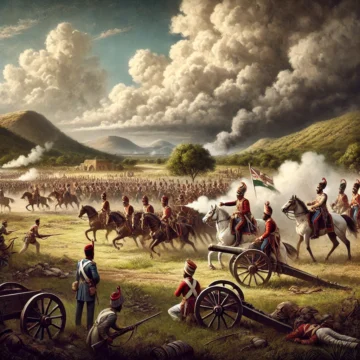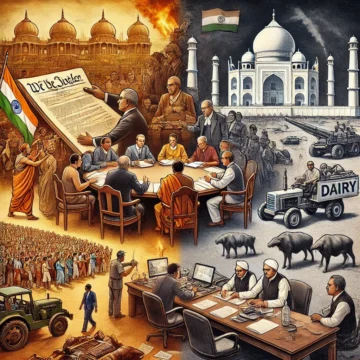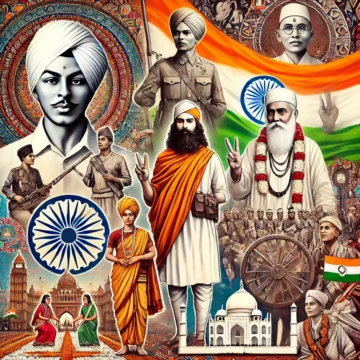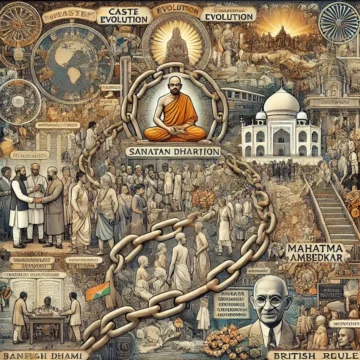Discover the strategic and cultural ramifications of the Third Anglo-Maratha War as it marked the decline of the Maratha Empire and the rise of British hegemony. The war's conclusion reshaped India’s political landscape, altering military strategies, cultural identities, and social structures, paving the way for the establishment of British rule.
Tag: Indian history
Mumbai Attacks: Reflections on November 26th’s Impact on India’s Path
On November 26th, India commemorates transformative events shaping its socio-political and economic landscape—adopting its Constitution in 1949, experiencing the tragic Mumbai attacks in 2008, and celebrating Verghese Kurien's birth in 1921, whose innovations launched the White Revolution, revolutionizing India's dairy industry.
Second Battles of Panipat and Echoes of Valor
Dive into the pivotal battles that shaped Indian history—the First and Second Battles of Panipat. Explore how Hindu King Hemu's ambitions clashed with young Mughal emperor Akbar's forces, shaping the political and cultural landscape of the subcontinent. Understand the immediate aftermath and the enduring legacy of these historical encounters.
Swami Dayanand Saraswati: The Luminary Founder of Arya Samaj II
This installment delves into Swami Dayanand Saraswati's profound impact, examining his revolutionary writings and the societal changes following his demise. We explore how his teachings continue to inspire reform and discuss his significant role alongside contemporaries in shaping modern India's socio-political landscape.
Ambedkar’s Buddhist Conversion: Challenging Caste with New Faith
Dr. B.R. Ambedkar’s conversion to Buddhism was a monumental act that not only shifted religious identities but also challenged entrenched caste hierarchies in India. His decision, rooted in a profound critique of the caste system as institutionalized in Hindu doctrines, sparked a significant dialogue on equality and social reform.
Akbar & Mughal Challenges: Battle of Tughlaqabad and Hemu’s Stand
Explore the pivotal Battle of Tughlaqabad where Hemu, a visionary Hindu king, remarkably challenged the burgeoning Mughal forces under Akbar. This blog delves into the tactical genius of Hemu and the broader socio-political implications of his stand against the Mughal expansionist agenda in 1556.
Jyotirao Phule and the Dawn of Social Reform
Jyotirao Phule, born in 1827 and founder of the Satyashodhak Samaj, challenged the entrenched norms of 19th-century society. Through the lens of "Dharma and Ethics," this blog explores Phule's profound moral and spiritual reforms that transcended caste and gender discrimination, advocating for a practical application of Dharma in social reform.
Poona Pact: Colonial Legacies and Enduring Divisions in Hindu Society
The Poona Pact of 1932, brokered amidst India's freedom struggle, was a crucial agreement between Gandhi and Ambedkar under British colonial influence. It aimed to preserve Hindu unity while addressing caste disparities, setting a stage for future social reforms and the ongoing discourse on affirmative action and equality in modern India.
India: Historical Events of the 39th Week
Explore the transformative events of India's 39th week across centuries. From Bhagat Singh's revolutionary zeal and Sankardev's spiritual contributions to Guru Nanak's enduring teachings and the ceasefire of the 1965 Indo-Pak War, this blog illuminates how these moments have significantly shaped India's cultural and political landscapes.
Sanatan Dharma and Caste Evolution: Navigating the Pros and Cons
Explore the intricate layers of caste evolution within Sanatan Dharma through historical periods like the Mughal era and British colonial rule. Witness how figures like Mahatma Gandhi and B.R. Ambedkar shaped the modern perceptions and roles within the caste system, and delve into the ongoing debates over nepotism and caste-based privileges.











